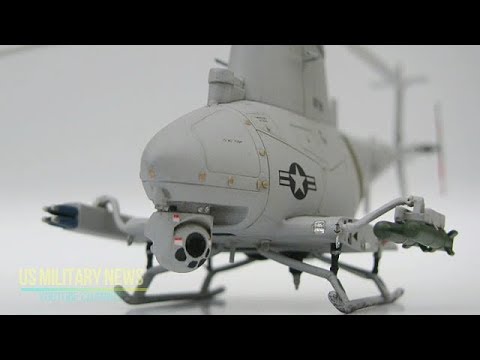
DJI gimbals make a great choice if you're looking for the best gimbal to fit your camera or drone. They provide excellent value for money and have thousands upon thousands of happy customers. Let's take a look at the main features and their pros and cons. Read our article to learn if DJI's gimbals might be the best option for you. You may find it helpful!
Advantages
You may attract unwanted attention when using a gimbal to record videography. Not everyone is comfortable using a gimbal, and sensitive subjects may be put off by the camera's presence. In some cases, security can shut down a shooting session if they detect a gimbal rig. Sometimes, security might have to stop you from shooting if they find a gimbal rig. If you have a specific goal, a gimbal might be the best choice.
Requires leveling
The DJI gimbals can be a little tricky to level properly. It can be difficult to level the DJI gimbal properly. DJI Support will help you to level your gimbal. They will pass your case on to Professional Post Sales Support.

It takes some time to set it up
Dji gimbals are great tools for filmmakers, but they do require a little bit of time to set up. One of the biggest disadvantages of these systems is that they require a lot of setup time. However, this is a minor downside when compared to the advantages of using Steadicam systems, which require no set up at all. Getting up and running with a gimbal is relatively easy, but the learning curve is a little bit steep and it can take quite a bit of time. The tripod must be secured in closed form. Additionally, the app to control the device is buggy and poorly designed. However, this will change in time. For now Zhiyun's past with software isn't.
Cost
There are many reasons why you should buy a DJI drone gimbal. But the most important is their ability stabilize the camera. Even though DJI gimbals can be expensive, most people can afford them. A decent gimbal costs $159, even though it is less than $100. DJI gimbals are the most expensive on the market, at $218 without the Light Clamp.
Available
DJI has created a range of smartphone gimbals which are among the most advanced in the market. These gimbals have become more advanced with every year that passes. The DJI OM 5 5 is the most pricey of the lineup. These gimbals are amazing. Let's have a closer look.

FAQ
What is the difference between a quadcopter and a hexacopter?
A quadcopter is an four-rotor helicopter which flies in the same manner as a conventional helicopter. It is equipped with four rotors, each of which can rotate independently. A quadcopter has four rotors. The hexacopter has six. Hexacopters offer more maneuverability and stability than quadcopters.
Flying with a drone?
Drones are becoming more and more popular for personal and professional use. They are used for video, filming aerial mapping, search &rescue, and many other purposes. Recent regulations regarding drones have been approved by FAA. They include new requirements for registration and licensing, pilot training, insurance, and other requirements. These changes will help ensure that drones stay safe for all.
A drone can spy on you.
Yes, anyone can fly a drone and spy on you. Protecting yourself from drones requires that you be alert to them and stay away from areas where they fly. If you notice a drone flying around, call 911 immediately.
Statistics
- According to the multiple listing service (MLS), houses and apartments with drone photographs are up to 68 percent more likely to sell than those without pictures. (thedroneu.com)
- Research and Markets predict a growth rate of 51.1% over the next five years. (thedroneu.com)
- With the top 10% making over $100/h and the bottom 10% making as low as $10/h. (dronesgator.com)
External Links
How To
How to Fly Drones With Beginners
A drone refers to a remote-controlled aircraft designed for aerial photography, surveillance and scientific research. Drones are a technology that has been around since World War II. DJI introduced their Phantom series of quadcopters in 2010, but commercial use only began in 2010. From beginner-friendly drones such as Parrot AR Drone 2.0 through professional-grade multirotor craft like DJI Mavic Pro, many types have been available.
There are many options for flying a drone.
-
Remote control - This allows you to control the drone from your hand. There are two main types for controllers: Joysticks or On/Off switches, which can be used to control the drone's flight path.
-
Manual Control – This allows remote operation of the drone via GPS coordinates using a smartphone application. Follow the instructions of the app to track the exact location you want the drone go.
-
Autonomous Flight: This means that the drone will take care of all the piloting. The drone is able to fly autonomously, without the need for human intervention. A drone must have a builtin camera and sensors capable to capture images and other data.
-
Triggered Flight – This method is very similar to manual flight. The pilot creates a route that the drone will follow until it reaches the destination. Once the programmed route has been completed, the drone returns to the base automatically.
-
Landing Gear - Some drones come equipped with landing gear that allows them to land safely if they lose power or run out of battery during flight.
-
Goggles - Some pilots wear goggles to protect themselves from debris while operating.
-
Camera - Some drones can be equipped with cameras which enable you to capture photos from the sky.
-
Obstacles: Some drones are equipped with obstacle avoidance systems to prevent them from hitting obstacles.
-
Speed - Some drones can travel at speeds over 40 mph.
-
Battery Life - Most drones are capable of lasting between 20 minutes and three hours, depending on the power that you use.
-
Range - Some drones can travel upto 30 miles depending on their models.
-
Power source - Some drones need an external power source, while others use internal batteries.
-
Weight - Some drones are lighter than others, while some models can weigh as much as 4 pounds.
-
Size - The size of drones varies from small, easily carried devices to more substantial crafts that weigh in excess of 50 pounds.
-
Price - From high-end models that cost thousands of dollars to low-cost options that start at $100, all drones fall under a certain price category.